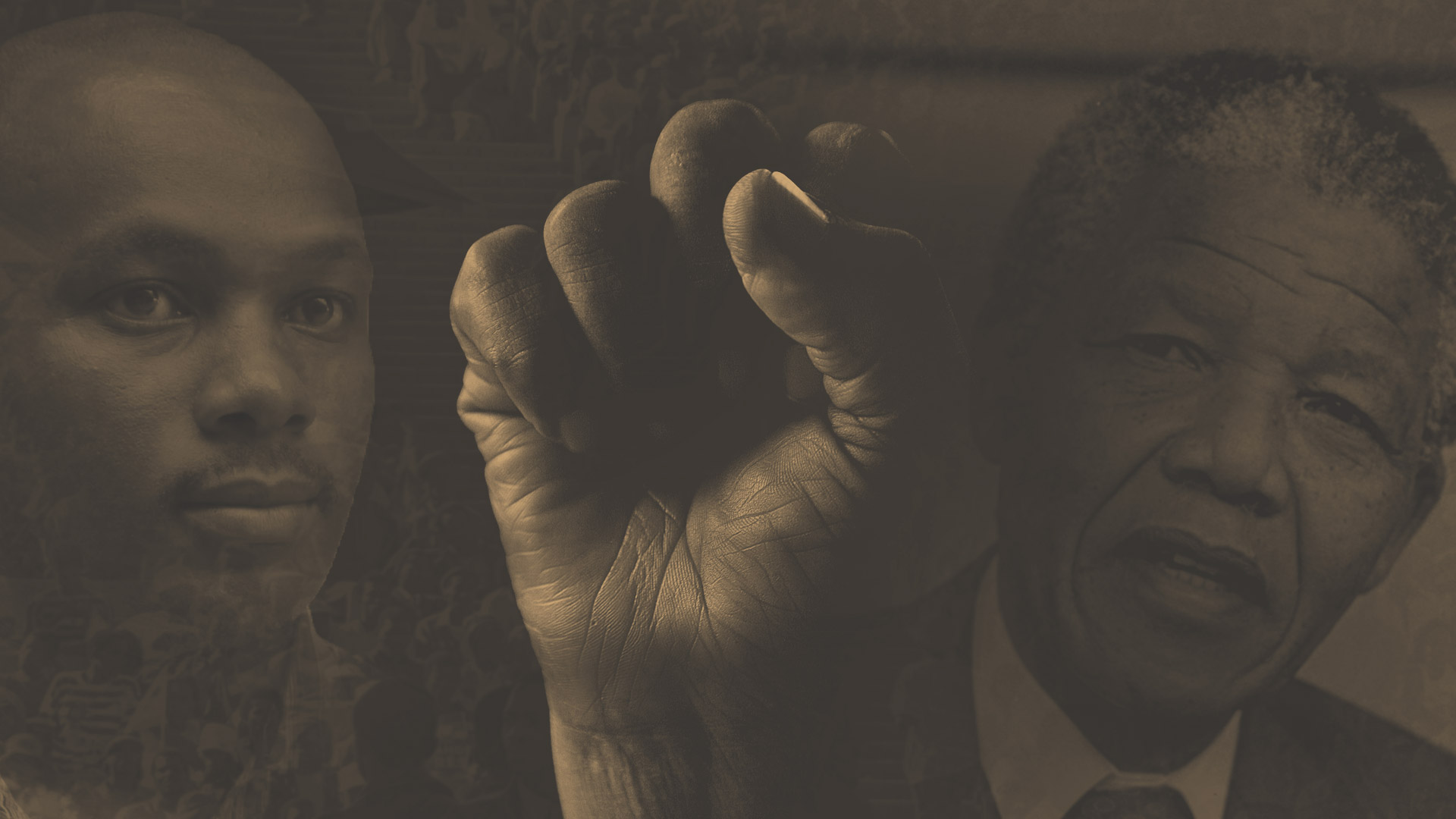Unlike most conventional archives, the Foundation's Centre of Memory is not defined by the custody of physical collections (although it has substantial and growing collections). The Mandela Archive is infinite, fragmented, and scattered both geographically and institutionally. It is neither the intention of the Foundation, nor its mandate, to bring all these materials into a single physical collection. The imperative is to document this vast resource, facilitate access to it, and promote its preservation and use.
Prince Harry tours the Foundation's archives with CE Sello Hatang. Image: NMF
The most important tool in achieving this objective is web-based technology. The Foundation has conceptualised a multi-layered virtual archive (portal) accessible through the organisation’s website (www.nelsonmandela.org). The following key design elements define the portal’s shape – a surface layer of stories and information; databases providing a dense description of materials; linkages to actual materials, to other sites and to different layers within the site; digitised materials, from hard copy to moving images; and a social media webbing around it. Through the report period each of the portal’s design elements received sustained attention, with special focuses on mobile phone apps as a new design element and on the Foundation’s continuing digitisation project.
The Foundation launched a Mandela Quotes mobile phone app, partnered with South African Tourism on the development of the In the Footsteps of Nelson Mandela mobile phone app, and partnered on the development of a Google Streetview app for Robben Island. Work on an app providing a virtual tour of the Foundation’s archive was far advanced.
The digitisation project was boosted by the recruitment of Tenille Hands, an Australian Volunteers International specialist in digitisation, to drive it through 2015. Under her oversight:
- Integrated storage, management and content delivery solutions were researched and analysed
- A unique in-house solution was developed in partnership with Praxis and Flow Communications. We purchased, installed and configured a state of the art centralised on-site archival storage and retrieval system that provides a standards-based, long-term solution for the secure storage of digital collections in compliance with ISO-OAIS functional model. Services include secure and scalable data storage and management, ongoing administration and delivery of objects (by trusted applications Archivematica & AtoM), and object accounting and reporting services. The solution was implemented in January 2016
- Two data processors were recruited and trained to ingest digital files into the system and to catalogue them
- The Foundation's film archive was moved from outsourced to in-house management
- A service provider was identified through competition for the digitisation of the massive 46664 film archive. Implementation began towards the end of 2015 and is expected to be completed within 12 months
- A new high resolution scanner was acquired
- The Foundation’s virtual exhibits on the Google Cultural Institute platform were maintained, functionalities monitored, and a new exhibit developed
Delegates from UN Women, the United Nations entity for gender equality and the empowerment of women, visit the Archive. Image: NMF
Other online projects included:
- The 25th anniversary of Madiba’s release from prison was marked with a special online feature and participation in an event at the Constitutional Court
- A joint project with the SABC saw the launch of an online resource providing film clips of Madiba for each day of the year
A number of significant archival collections were accessioned: Mac Maharaj donated to the Foundation a priceless accumulation of Robben Island-related materials, including pages of Long Walk to Freedom which he had smuggled off the Island; Judge Goldstone donated his Goldstone Commission materials; and Hassen Ebrahim donated his CODESA and Constitutional Assembly records. Capacity constraints make proactive acquisitions impossible and limits the processing of collections.
All new acquisitions were subjected to routine archival processing, while databases and other web-accessible resources were regularly updated. Assistance was provided to the Sisulu family in digitising its archive and to the Naidoo family History Project.
Liverpool FC women's team visit the NMF. Image: NMF/Lee Davies

